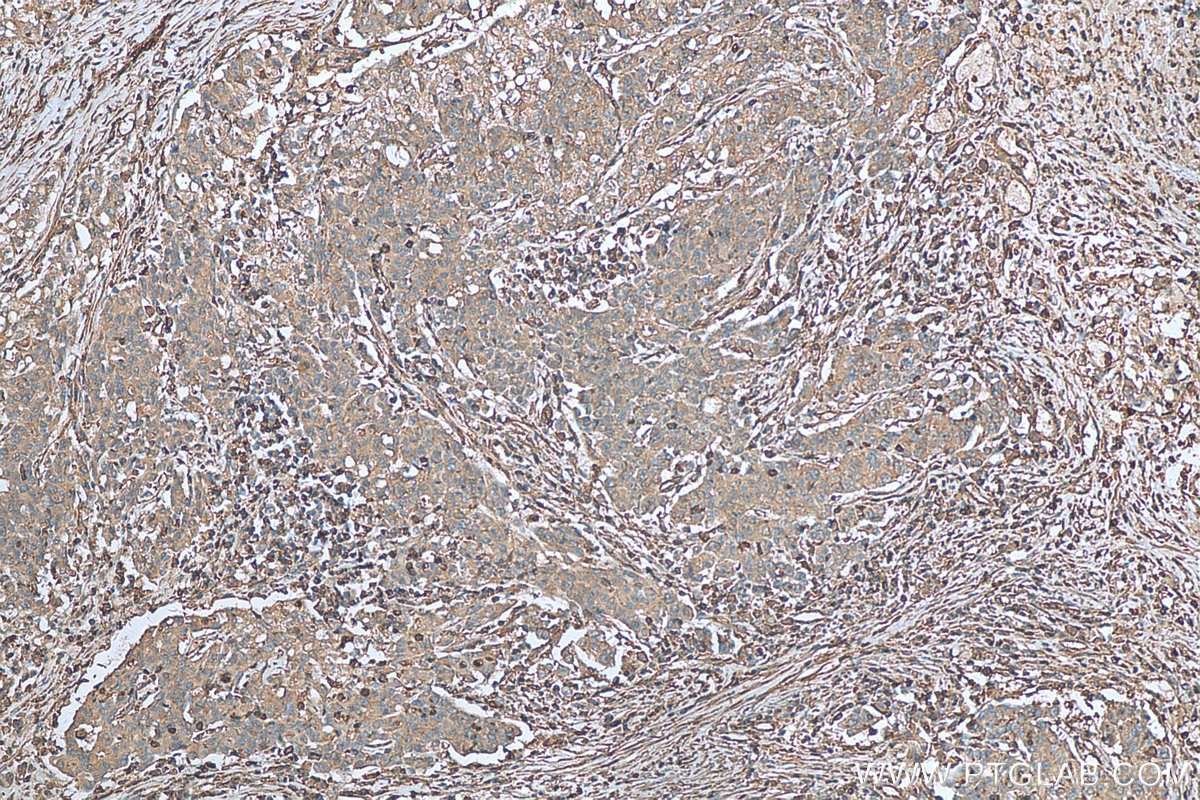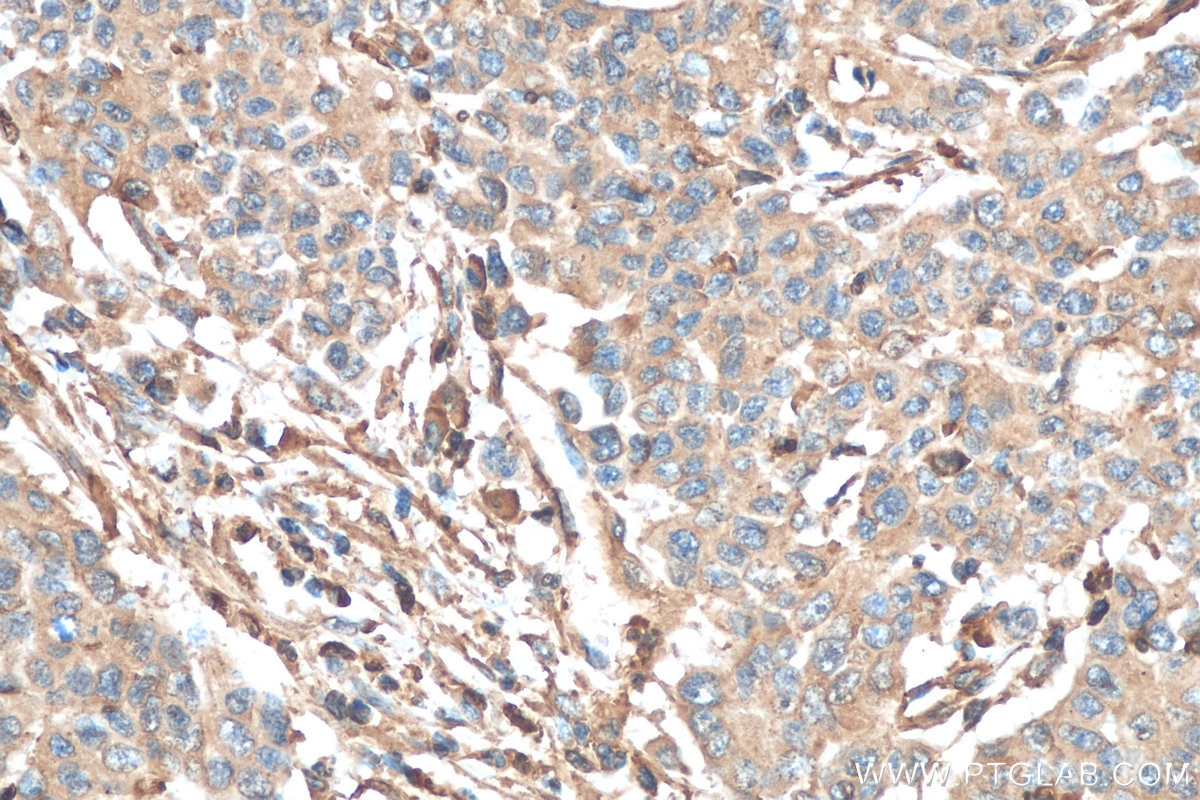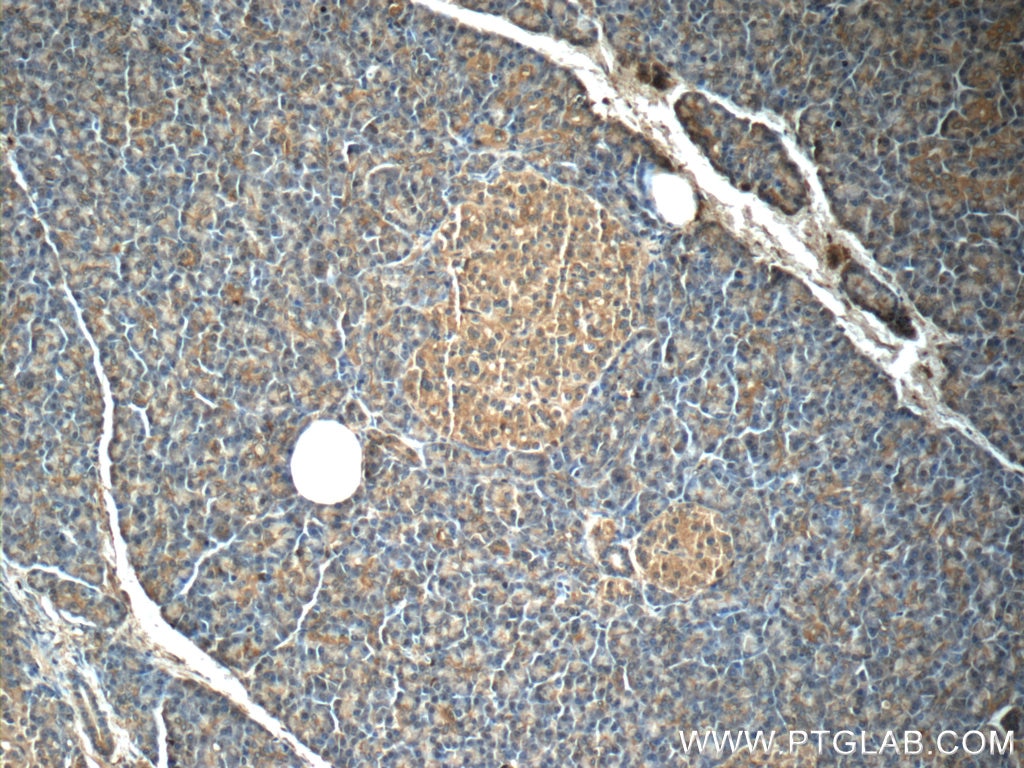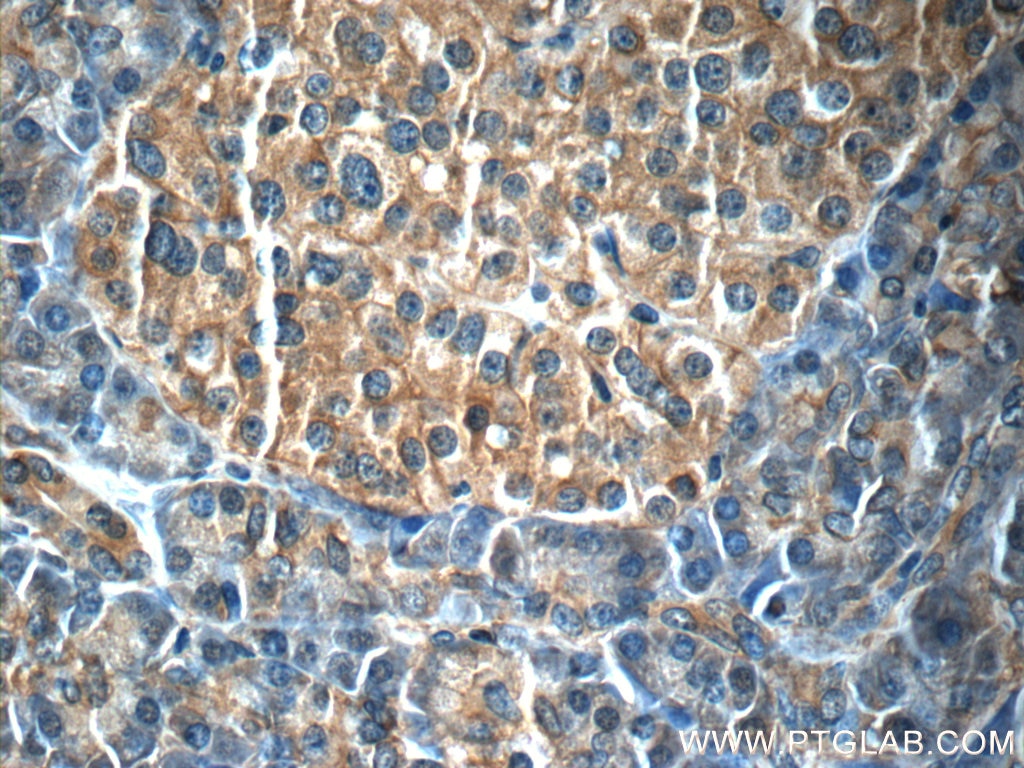Anticorps Monoclonal anti-IL-23 p19
IL-23 p19 Monoclonal Antibody for IHC, Indirect ELISA
Hôte / Isotype
Mouse / IgG1
Réactivité testée
Humain
Applications
IHC, Indirect ELISA
Conjugaison
Non conjugué
CloneNo.
1D5D3
N° de cat : 66196-1-PBS
Synonymes
Galerie de données de validation
Informations sur le produit
66196-1-PBS cible IL-23 p19 dans les applications de IHC, Indirect ELISA et montre une réactivité avec des échantillons Humain
| Réactivité | Humain |
| Hôte / Isotype | Mouse / IgG1 |
| Clonalité | Monoclonal |
| Type | Anticorps |
| Immunogène | IL-23 p19 Protéine recombinante Ag19406 |
| Nom complet | interleukin 23, alpha subunit p19 |
| Masse moléculaire calculée | 189 aa, 21 kDa |
| Numéro d’acquisition GenBank | BC066268 |
| Symbole du gène | IL23A |
| Identification du gène (NCBI) | 51561 |
| Conjugaison | Non conjugué |
| Forme | Liquide |
| Méthode de purification | Purification par protéine G |
| Tampon de stockage | PBS only |
| Conditions de stockage | Store at -80°C. 20ul contiennent 0,1% de BSA. |
Informations générales
Interleukin 23 (IL-23) is a member of the IL12 cytokine family and composed of two subunits, IL12p40 and IL23p19. It is produced by antigen presenting cells and has been shown to promote the production and survival of a distinct lineage of T-cells called TH17 cells. A functional receptor for IL-23 (the IL-23 receptor) has been identified and is composed of Il-12Rβ1 and IL-23R. IL-23 is expressed chiefly by the macrophages and DCs. The IL-23R is found on memory T cells, NKT cells, macrophages, DCs, and naive T cells upon activation by TGF-βand IL-6. The main biological effects of IL-23 identified initially consist of stimulation of antigen presentation by DCs, T cell differentiation to Th17 cells, and production of interferon-γ (IFN-γ). IL-23 acts also as an end-stage effector cytokine through direct action on macrophages.









